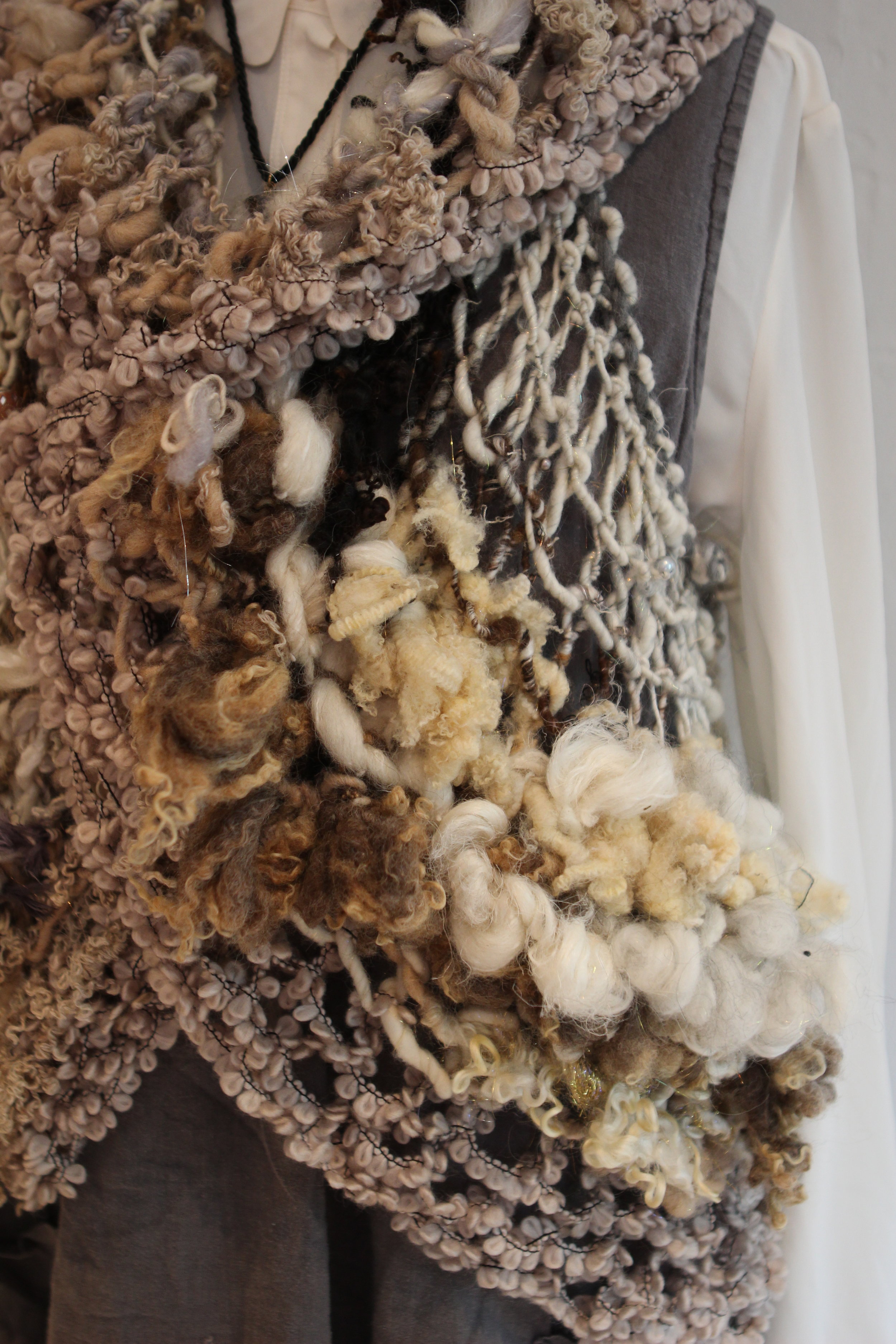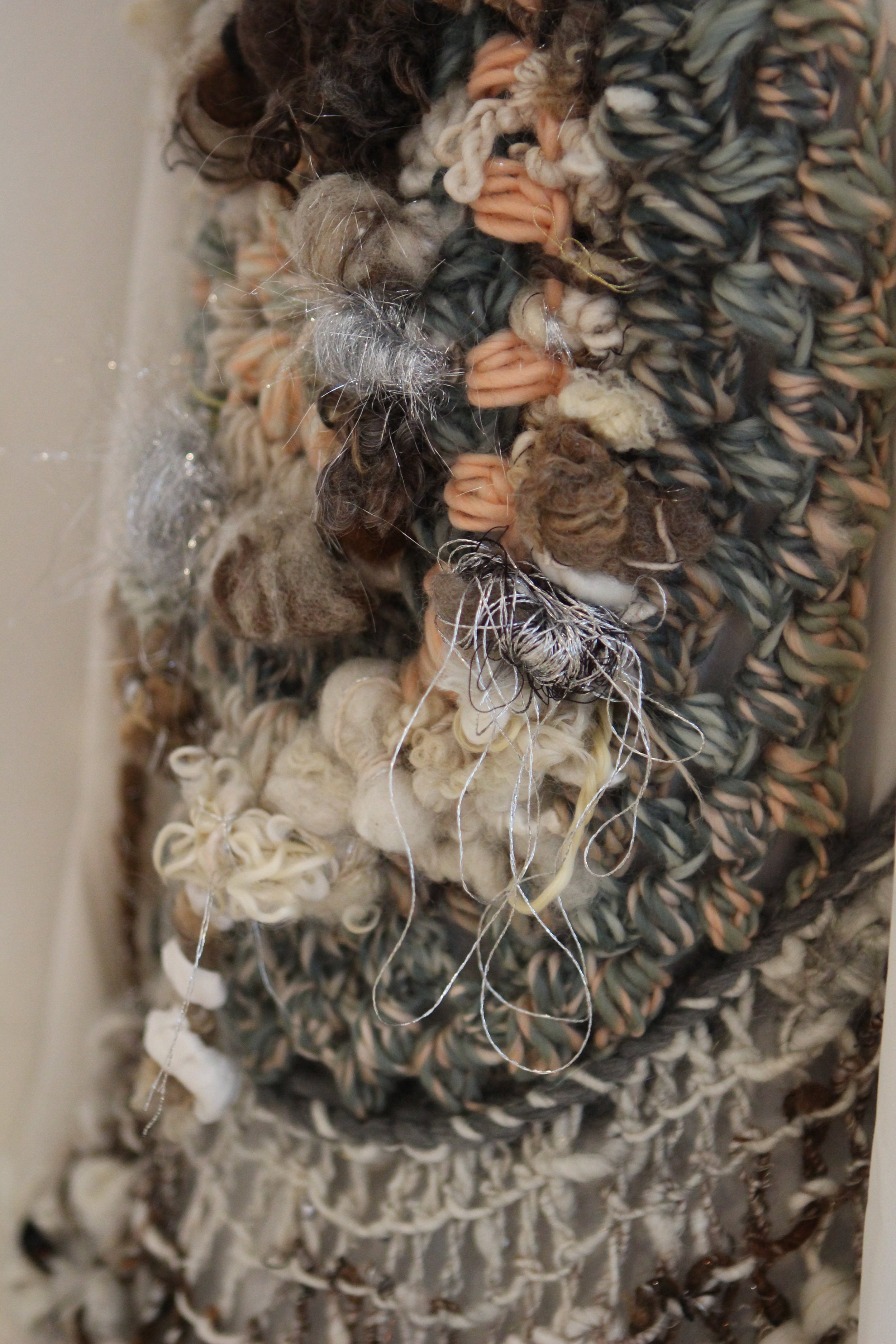I love the way circular shawls drape, and I wanted something that was easy to shape and showcased my handspun yarn beautifully. So I used a crochet puff stitch in the round for the back piece (accented with two art yarns) and I knit the flounce on circular needles in the round. Then I seamed the flounce to the back - leaving two holes for arms - and it was done in about 4 hours.
This is a very intuitive pattern. Being able to crochet circular shapes with yarn of varying gauges is the hardest part. If you aren't very savvy with crochet, I recommend using a commercial yarn for the back so it's easier to follow a gauge pattern and keep your circle flat. If you feel confident, try using different yarns for the back (adjusting the stitching for the bulkiness of the yarn) in a freeform type of style, maintaining a flat circle, until your back piece is as large as mine.
MATERIALS
- 80-100 yards of Commercial Chunky Yarn for Backpiece and Flounce (YARN A and YARN B)
- Large Crochet Hook for Backpiece (Size P or above)
- 150-200 yards of yarn for the flounce (I used Handspun Art Yarn, of many different lengths; YARNS C-F )
- Size 19 circular knitting needles, at least 32 inches long
PATTERN
CROCHET BACKPIECE: I followed the video below on how to crochet a puff in a circle (I did not shape it into a square, but continued the circular shape) using YARN A and accented with two skeins of handspun art yarn at random points of the circle. I continued crocheting the circle until it had a diameter of 20 inches.
KNIT FLOUNCE: Cast on 100 stitches (this will be the outside / widest point of your flounce). Join for knitting in the round, being careful not to twist stitches. Knit in the round using a Simple Elongated Stitch.
I used commercial YARN B to cast on so that I didn't run out of yarn during my cast on (many of my handspun skeins are under 30 yards - not enough for a good few rows of 100 stitches. A good way to conserve yarn is a knitted cast on). I also wanted to have a boucle' accent around the outside edge of my flounce. To do this, I knit in the round until I was competely out of yarn. Then I knit with handspun art yarns C, D, E, F until I was out of those yarns. I continued knitting in the round until the piece was 20 inches long. Then I bound off tightly - this tight bind off will be the part that we seam to the crochet circle. If you need extra allowance for your arms, don't bind off too tightly.. You can always cinch your bind off edge with the crochet circle when you're seaming.
SEAMING - Seam across the back of neck and lower back as pictured below - leaving two holes open for the arms. Use mattress stitch or visible seaming method for more drama.
FINISHING - Weave in loose ends. Block with Unicorn Fibre Rinse. Gently pat dry, reshape and dry flat.





